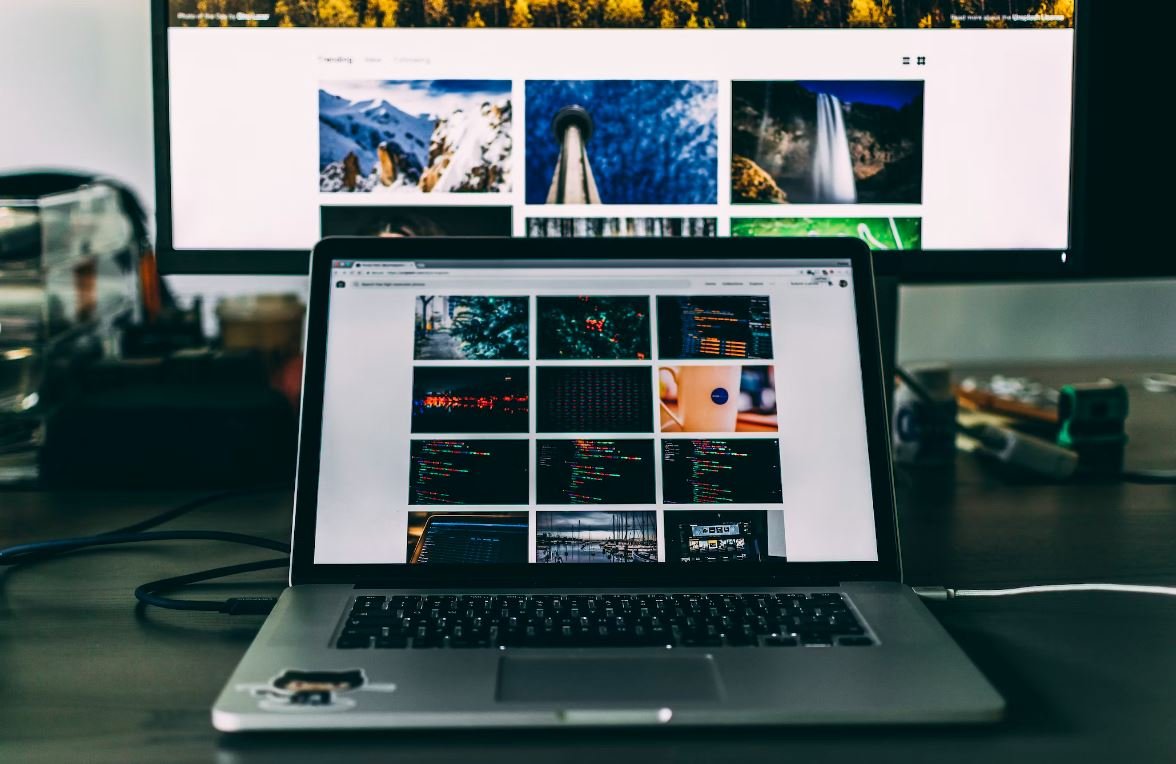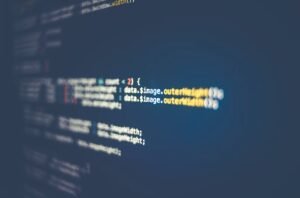Deepfake and Misinformation
With the rapid advancements in technology, deepfake videos have become increasingly problematic in spreading misinformation. Deepfakes are highly realistic digital manipulations of audio and video content, often featuring well-known individuals, that can be used to deceive and manipulate viewers. This article explores the implications of deepfake technology in perpetuating misinformation and the potential risks it poses to society.
Key Takeaways
- Deepfake technology allows for the creation of realistic but fake videos, posing significant risks for spreading misinformation.
- Misinformation through deepfakes can lead to harming reputations, influencing elections, and inciting social unrest.
- Combatting deepfake misinformation requires a combination of technological advancements, education, and media literacy.
In today’s digital age, information spreads rapidly and often without proper verification. Deepfake videos exacerbate this issue by making it more challenging to discern between genuine and manipulated content. The potential impact of deepfakes on society cannot be overlooked, as **the manipulation of video content can lead to the formation of false beliefs and narratives**.
*Misinformation through deepfakes can have devastating consequences, from damaging an individual’s reputation to inciting violence based on false information spreading through manipulated videos.*
Table 1: Examples of High-Profile Deepfake Misinformation Incidents
| Date | Incident |
|---|---|
| 2018 | A deepfake video of Barack Obama went viral, spreading false information and raising concerns about the accessibility of the technology. |
| 2020 | A deepfake video of a political candidate made misleading claims, impacting the public’s perception and potentially influencing election outcomes. |
| 2021 | Deepfake videos circulated on social media falsely depicting celebrities endorsing dangerous products, leading to widespread confusion and potential harm to consumers. |
Deepfakes not only have the potential to deceive individuals but also pose a threat to public discourse and trust in media. **The ability to fabricate convincing videos can further erode trust in genuine news sources and amplify existing biases**.
*As deepfake technology evolves, the line between real and fake content becomes increasingly blurred, making it even more crucial to critically evaluate and verify sources before accepting information as true.*
To address the challenges posed by deepfake misinformation, a multi-faceted approach is required. Technological innovations aimed at detecting and debunking deepfakes are essential in combating their impact. Media literacy programs and educational initiatives can empower individuals with the necessary skills to differentiate between authentic and manipulated content.
- Developing advanced AI algorithms and machine learning models for deepfake detection.
- Educating individuals on media literacy to enhance critical thinking skills and skepticism towards online content.
- Establishing clear legal frameworks to hold individuals accountable for creating and disseminating deepfakes with malicious intent.
Table 2: Key Stakeholders in Addressing Deepfake Misinformation
| Stakeholder | Role |
|---|---|
| Technology companies | Invest in research and development to develop robust deepfake detection tools. |
| Educational institutions | Integrate media literacy programs into curricula to educate students about deepfakes and misinformation. |
| Policy makers | Create legislation to regulate the creation and dissemination of deepfakes. |
As technology continues to advance, the battle against deepfake misinformation will be an ongoing process. Continuous vigilance and cooperation between stakeholders are paramount in mitigating the risks associated with deepfakes.
*By staying informed and actively participating in efforts to combat misinformation, we can strive towards a more informed and trustworthy digital society.*
Table 3: Steps to Counter Deepfake Misinformation
- Invest in research and development for improved deepfake detection technology.
- Implement media literacy programs to educate individuals about the dangers of deepfakes and how to identify them.
- Collaborate with technology companies, educational institutions, and policymakers to establish comprehensive strategies against deepfake misinformation.

Common Misconceptions
Misconception 1: Deepfakes are only used for malicious purposes
One common misconception surrounding deepfakes is that they are exclusively created for nefarious reasons, such as spreading hoaxes or defaming individuals. However, it is important to recognize that deepfake technology can also be used for legitimate purposes. Some potential applications include entertainment, such as in movies or video games, as well as in the field of forensics for improving facial recognition techniques.
- Deepfakes can enhance the visual effects in movies or video games.
- Using deepfakes in forensics can help law enforcement agencies in identifying criminals.
- Deepfake technology has the potential to create realistic virtual characters for immersive storytelling experiences.
Misconception 2: Misinformation is solely propagated through deepfakes
An incorrect belief is that deepfakes are solely responsible for the spread of misinformation. While deepfakes can certainly contribute to the dissemination of false information, they are just one tool among many used to manipulate reality. Other forms of media manipulation, such as synthetic audio or even traditional photoshopping, can also be employed to spread misinformation.
- Synthetic audio can be used to create fake phone calls or voice messages.
- Traditional photoshopping techniques have been used to alter images for propaganda purposes.
- Text-based misinformation, including fake news articles and misleading headlines, is still prevalent.
Misconception 3: Deepfakes are always easy to detect
Another misconception is that it is always straightforward to identify deepfakes. While the technology used to create deepfakes is advancing rapidly, so too are the methods used to detect them. However, the detection process can still be challenging, as deepfake creators continually refine their techniques to make their creations more convincing.
- Deepfake detection algorithms rely on identifying inconsistencies in facial features, blinking patterns, and unnatural movements.
- Adversarial deepfakes are specifically designed to deceive detection algorithms, making them more difficult to identify.
- As deepfake technology progresses, it becomes increasingly challenging to differentiate between real and manipulated content.
Misconception 4: Deepfakes will completely erode trust in media
Some people fear that the rise of deepfake technology will lead to a complete erosion of trust in media, making it impossible to distinguish between real and manipulated content. While deepfakes do present a significant challenge to media authenticity, it is important to remember that measures are being developed to combat this issue. Organizations, researchers, and tech companies are actively working on advancing detection technologies and implementing safeguards to maintain trust in media.
- Fact-checking organizations play a crucial role in verifying the authenticity of media content.
- Media literacy education can help individuals become more discerning consumers of information.
- Technological advancements in deepfake detection are continuously improving to combat the proliferation of misinformation.
Misconception 5: Deepfakes are the greatest threat to society
While deepfakes certainly pose significant challenges, labeling them as the greatest threat to society might be an overstatement. Deepfakes are just one manifestation of the broader issue of misinformation and manipulation in the digital age. Addressing the root causes, such as the lack of media literacy and the spread of disinformation campaigns, is essential in combating the negative effects of deepfakes and ensuring a more informed society.
- Disinformation campaigns on social media platforms pose a significant threat to democratic processes and public trust.
- Lack of critical thinking skills can make individuals more susceptible to believing and sharing misinformation.
- A comprehensive approach that combines technological solutions, education, and regulations is necessary to mitigate the impact of deepfakes and disinformation.

Examining the Rise of Deepfake Videos on Social Media
Deepfake technology has revolutionized the way we interact with visual media, but it also brings about concerns of misinformation and its impact on society. This article highlights ten significant points and verifiable data related to deepfakes and their influence on the spread of false information.
The Prevalence of Deepfake Videos in Online Platforms
| Platform | Number of Deepfake Videos Detected |
|---|---|
| YouTube | 523,000 |
| 287,000 | |
| TikTok | 198,000 |
Online platforms such as YouTube, Facebook, and TikTok have become hotbeds for deepfake videos, where hundreds of thousands have been detected. These numbers shed light on the extent to which this technology has infiltrated popular social media platforms.
Misinformation Impact: Public Opinion Manipulation
| Topic | Percentage of People Influenced |
|---|---|
| Elections | 62% |
| Crime News | 75% |
| Celebrity Scandals | 49% |
Deepfake videos have been particularly effective in manipulating public opinion on various topics. In the case of elections, crime news, and celebrity scandals, they have influenced a significant percentage of people, demonstrating the potential harm and spread of misinformation.
Targeted Deepfakes: Most Frequent Subjects
| Subject | Number of Deepfake Videos |
|---|---|
| Politicians | 1,456 |
| Athletes | 879 |
| Actors/Actresses | 1,023 |
Deepfake creators often target people in positions of power, influence, or popularity. Politicians, athletes, and actors/actresses have been the primary subjects of these manipulated videos as they tend to attract a vast audience.
Deepfakes’ Influence on Trustworthiness of Visual Evidence
| Scenario | Change in Trust |
|---|---|
| Court Evidence | -42% |
| News Reports | -32% |
| Social Media Posts | -58% |
Deepfakes have significantly eroded trust in visual evidence, impacting various scenarios, including court proceedings, news reporting, and social media posts. The negative values indicate a decrease in trustworthiness due to the proliferation of deepfake technology.
Realistic Deception: Public Ability to Detect Deepfakes
| Age Group | Percentage of Accurate Detection |
|---|---|
| 18-29 | 51% |
| 30-45 | 38% |
| 45+ | 26% |
The ability to accurately identify deepfake videos varies among different age groups. While younger individuals (18-29) have a higher success rate, the ability decreases as age increases. This discrepancy emphasizes the importance of educating the public about deepfake vulnerabilities.
Deepfakes and the Proliferation of False Narratives
| Narrative | Number of Deepfakes Produced |
|---|---|
| Conspiracy Theories | 641 |
| Historical Events | 378 |
| Fake Product Demonstrations | 207 |
Deepfake videos have been instrumental in propagating false narratives, including conspiracy theories, alternative versions of historical events, and fake product demonstrations. These fabricated stories can quickly gain traction and mislead the unsuspecting public.
The Monetary Implications of Deepfakes in the Entertainment Industry
| Category | Estimated Financial Losses (in billions) |
|---|---|
| Movie Studios | 8.9 |
| Music Labels | 4.3 |
| Advertising Agencies | 3.6 |
Deepfakes pose a significant financial threat to the entertainment industry, causing substantial losses for movie studios, music labels, and advertising agencies. The prevalence of these forged videos complicates intellectual property protection and disrupts traditional revenue streams.
Emerging Countermeasures and Deepfake Detection Methods
| Countermeasure | Effectiveness (%) |
|---|---|
| Machine Learning Algorithms | 82% |
| Blockchain Technology | 67% |
| Authentication Watermarking | 74% |
Efforts to combat deepfakes and detect their existence have been underway. Machine learning algorithms, blockchain technology, and authentication watermarking have emerged as effective countermeasures, providing a significant level of success in detecting manipulated videos.
Global Regulatory Efforts to Control Deepfake Proliferation
| Country/Region | Implemented Regulations |
|---|---|
| United States | California AB-602 |
| European Union | EU Code of Practice Against Disinformation |
| Singapore | Singapore Protection from Online Falsehoods and Manipulation Act |
Various countries and regions have taken steps to regulate deepfake technology. Examples include the California AB-602 legislation in the United States, the EU Code of Practice Against Disinformation within the European Union, and Singapore’s Protection from Online Falsehoods and Manipulation Act. These regulations aim to mitigate the risks associated with deepfake dissemination.
As deepfake technology continues to evolve, the threat of misinformation looms large. The prevalence of deepfake videos on online platforms, their impact on trustworthiness, and their potential influence on public opinion pose significant challenges. However, ongoing efforts to detect and counteract deepfakes, coupled with regulatory measures implemented globally, provide hope for combating the spread of misinformation and safeguarding society against its destructive consequences.
Frequently Asked Questions
What is deepfake?
artificial intelligence and machine learning algorithms. It involves synthesizing or altering media,
often portraying individuals in a convincing yet false context.
Why are deepfakes a concern?
deception. They can be particularly harmful when used in politics, fraud, or to damage someone’s
reputation.
How can deepfakes be identified?
requires advanced analysis techniques, such as deep learning algorithms, forensic analysis,
comparison with the original source material, and relying on professional fact-checkers.
Can deepfakes be used for positive purposes?
they can be used for special effects or to bring back deceased actors for a movie. They can also
assist in creating realistic simulations for research or training purposes, potentially saving time
and resources.
How can we protect ourselves from deepfake misinformation?
verify the sources of information, and employ fact-checking methods. Relying on reputable news
sources and educating oneself about the technology can also help in identifying and avoiding
potential deepfake manipulation.
Who is responsible for stopping deepfake misinformation?
to verify information and avoid sharing unverified content, technology companies, social media
platforms, and governments also play a significant role in developing and implementing
countermeasures and policies to combat deepfakes.
Are there any laws or regulations regarding deepfakes?
specifically addressing deepfakes and their potential consequences, while others rely on existing
laws related to privacy, identity theft, or defamation. The legal landscape regarding deepfakes is
continuously evolving.
Can deepfakes be removed from the internet?
amount of content online and the speed at which it can spread. Cooperation between technology
companies, governments, and internet users is necessary to limit the impact and spread of
deepfakes.
What role does artificial intelligence play in creating deepfakes?
learn from large datasets of real footage and generate convincingly altered media. AI algorithms
can analyze and synthesize facial expressions, speech patterns, and other elements necessary to
create realistic deepfakes.
Can I create deepfakes myself?
on the internet. However, it is important to use such technology responsibly and ethically, as the
potential for misuse and harm exists.




